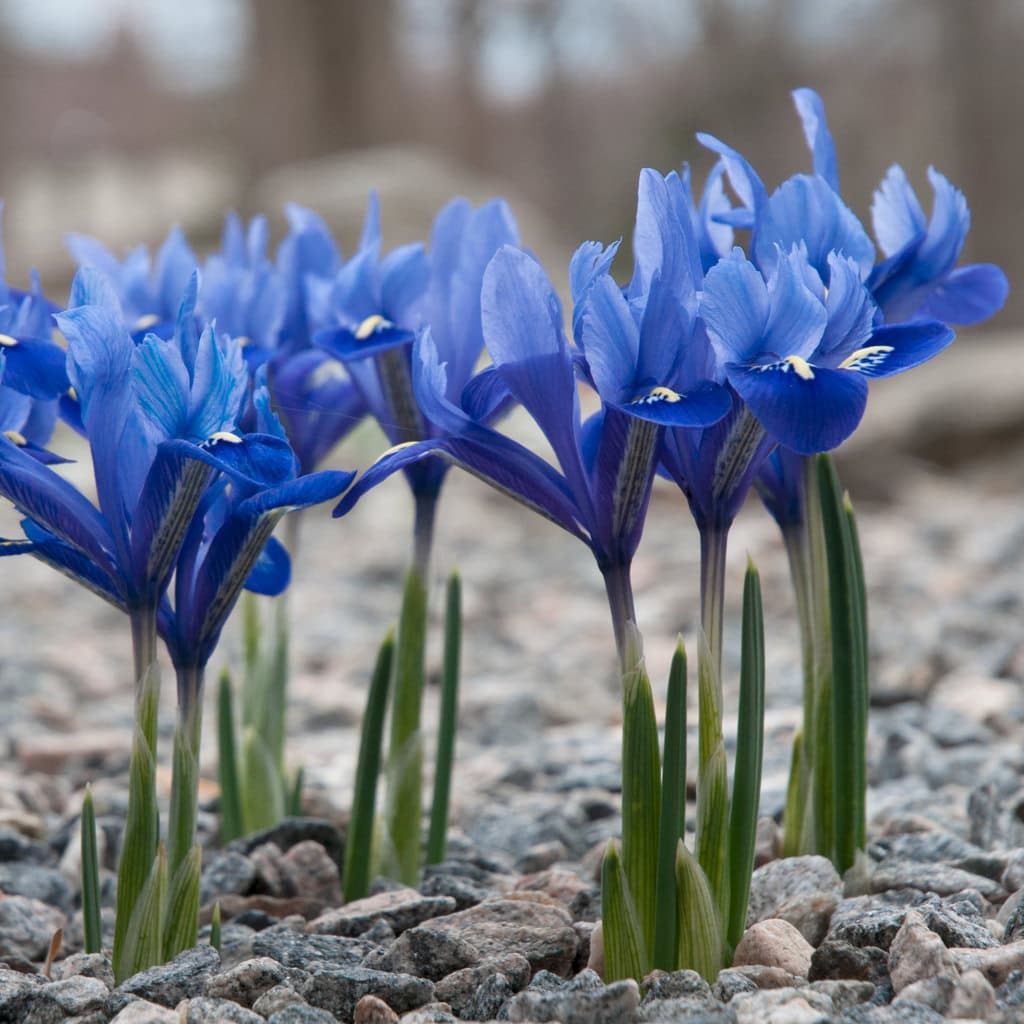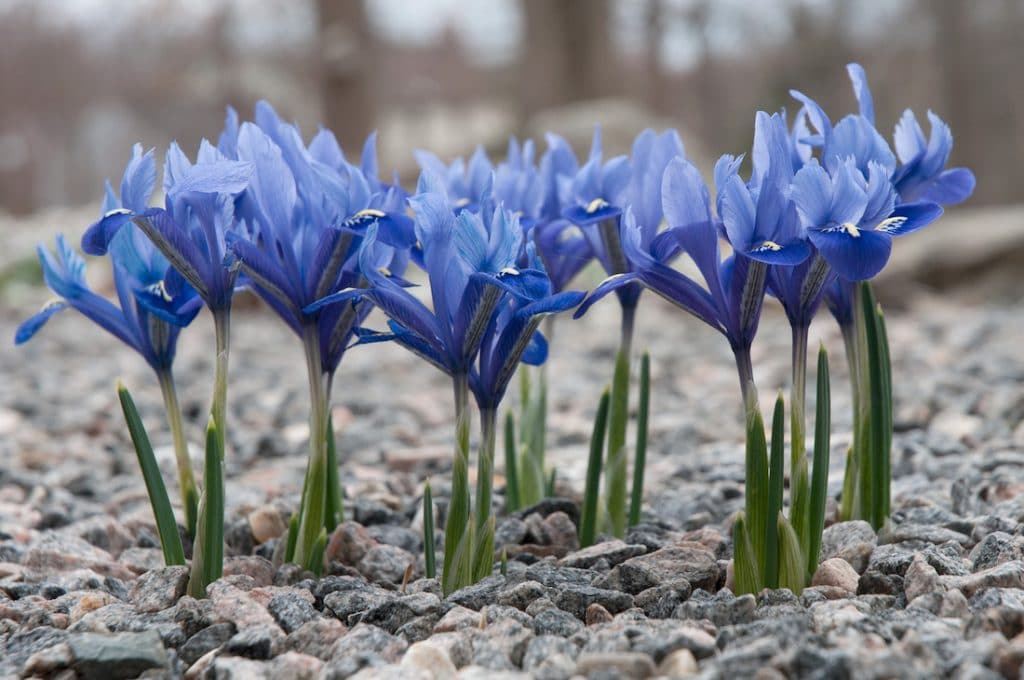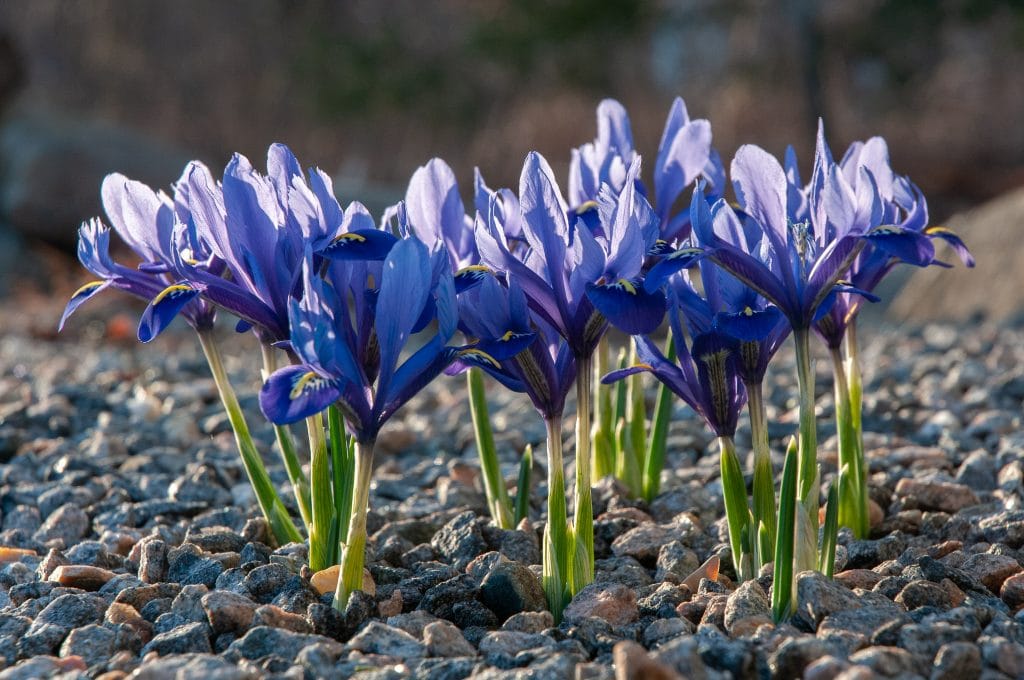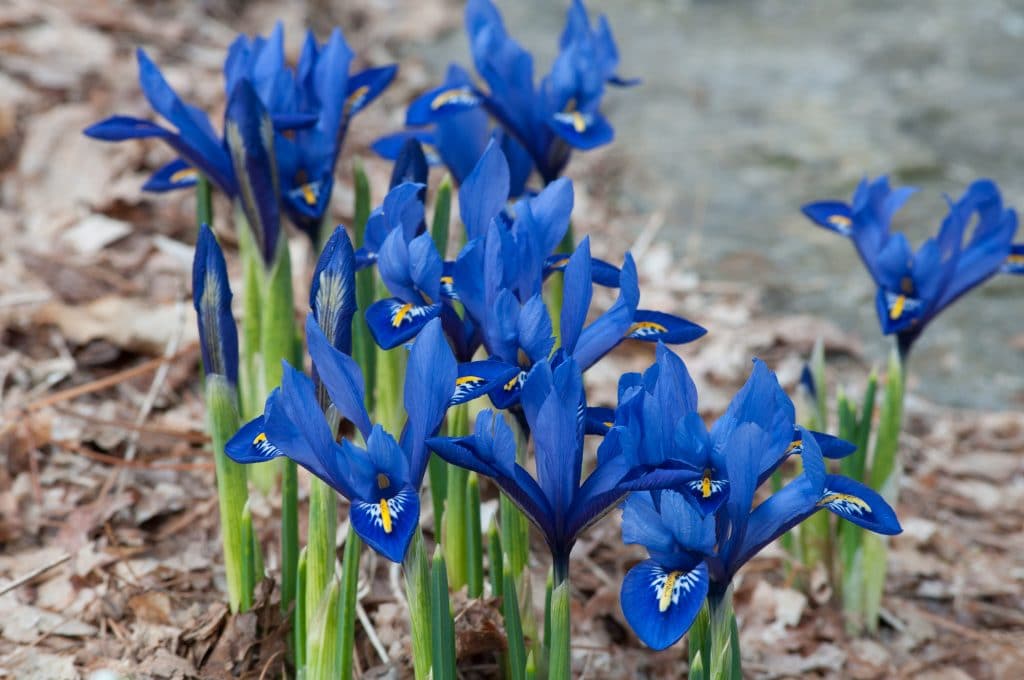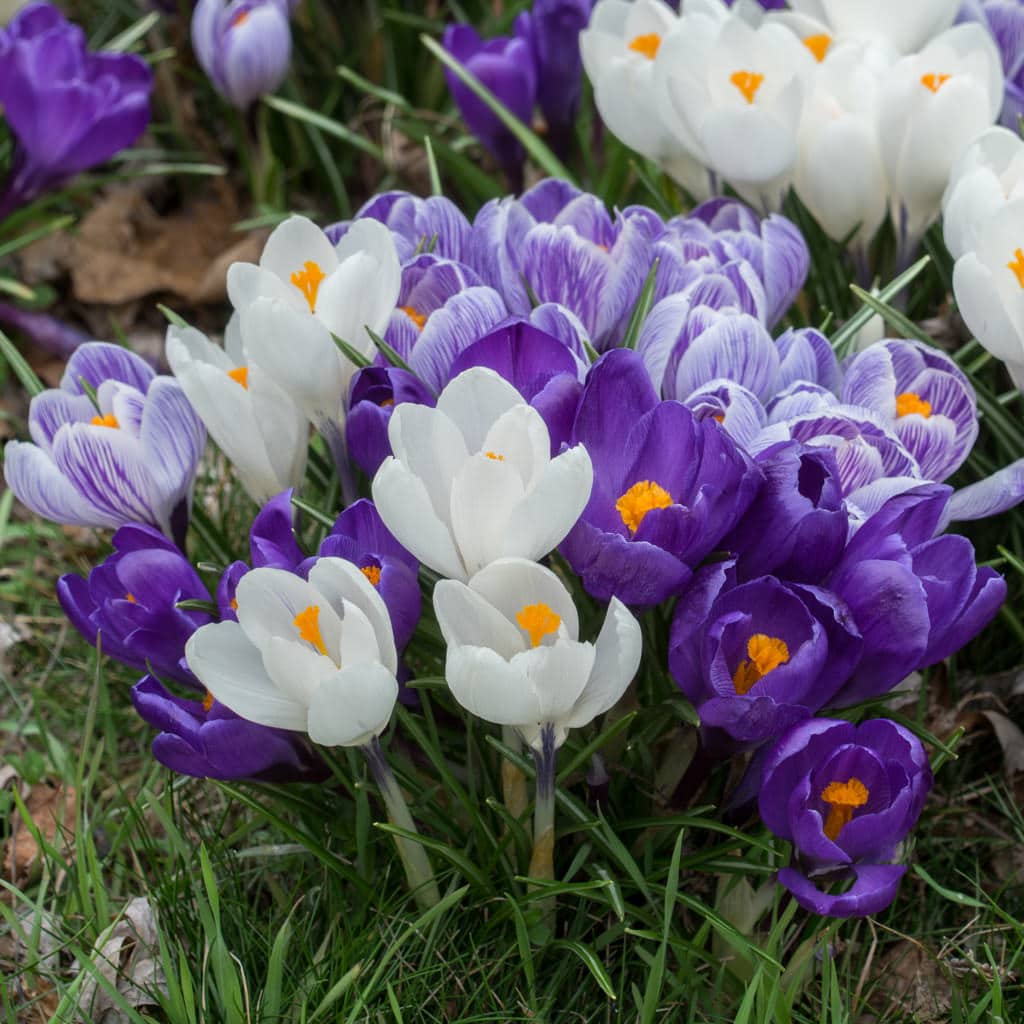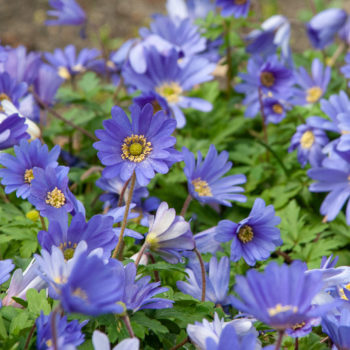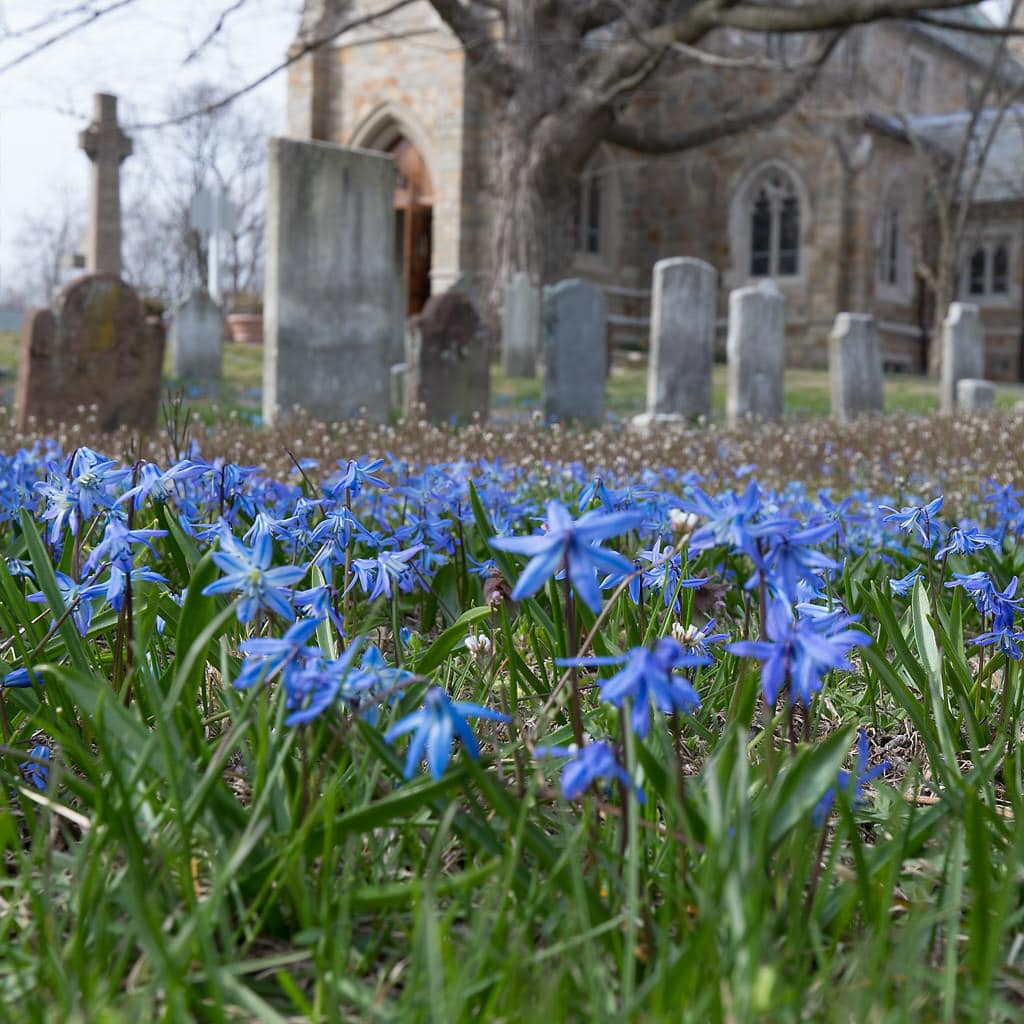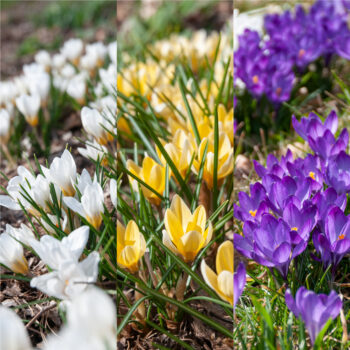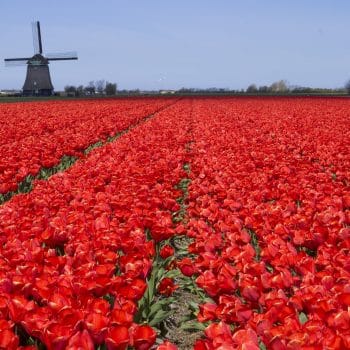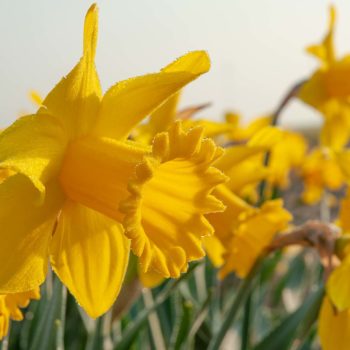Iris Harmony
Iris reticulata 'Harmony'
Specifications
Harmony is a diminutive and very early lavender-blue iris that grows from a bulb. It blooms with Snowdrops and Winter Wolf’s Bane, popping out of the ground in spring as soon as frosts become irregular and the ground warms a bit. Harmony’s display is brief, but if the bulbs are planted thickly and in quantity, they put on a memorable show. Give them a location in full sun where the soil is very well drained.
Deer Resistant
Note: Iris Harmony is resistant to deer, but rodents such as voles and gophers may eat the bulbs.
| Item # | 6064 |
| Height | 4—6 inches |
| Sunlight | Full (6+ hours sun per day) |
| Soil | Well drained |
| Flower Color | Lavender-Blue |
| Bulb Size |
6cm+ ?
Bulb size is determined by the circumference around the largest part of the bulb. Colorblends only delivers top size bulbs. Large bulbs produce more or larger flowers than small bulbs.
|
| USDA Zones |
3a—8b ?
Hardy in USDA zones 3a to 8b in the South or 10b on the West Coast. Prechill in zones 7b and warmer in the South, Southwest, and California.
|
| Bloom Time | Very Early |
- early
- mid
- late
Delivery & Planting Times
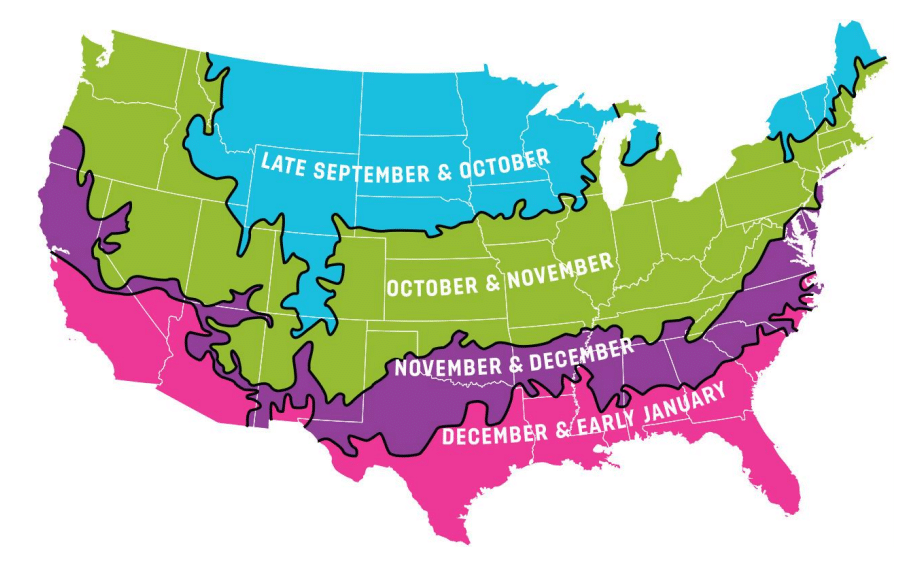
Spring-flowering bulbs must be planted in the fall. They need cool soil to make roots before the onset of winter. Cool fall weather arrives at different times from north to south and from high elevations to low.
Please note that the temperature of the soil lags behind the air temperature. You can generally plant later than the windows provided in this map. As long as the ground is not frozen, you can still plant.
Iris Harmony
Iris reticulata 'Harmony'
Harmony is a diminutive and very early lavender-blue iris that grows from a bulb. It blooms with Snowdrops and Winter Wolf’s Bane, popping out of the ground in spring as soon as frosts become irregular and the ground warms a bit. Harmony’s display is brief, but if the bulbs are planted thickly and in quantity, they put on a memorable show. Give them a location in full sun where the soil is very well drained.
Deer Resistant
Note: Iris Harmony is resistant to deer, but rodents such as voles and gophers may eat the bulbs.
| Item # | 6064 |
| Height | 4—6 inches |
| Sunlight | Full (6+ hours sun per day) |
| Soil | Well drained |
| Flower Color | Lavender-Blue |
| Bulb Size |
6cm+ ?
Bulb size is determined by the circumference around the largest part of the bulb. Colorblends only delivers top size bulbs. Large bulbs produce more or larger flowers than small bulbs.
|
| USDA Zones |
3a—8b ?
Hardy in USDA zones 3a to 8b in the South or 10b on the West Coast. Prechill in zones 7b and warmer in the South, Southwest, and California.
|
| Bloom Time | Very Early |
- early
- mid
- late
Sorry, Iris Harmony is not available.
When to Plant

Spring-flowering bulbs must be planted in the fall. They need cool soil to make roots before the onset of winter. Cool fall weather arrives at different times from north to south and from high elevations to low.
Please note that the temperature of the soil lags behind the air temperature. You can generally plant later than the windows provided in this map. As long as the ground is not frozen, you can still plant.
Planting Instructions
Iris reticulata requires well-drained soil and full sun, and it likes to be dry in summer. The bulbs perform best if planted with points up. After bloom, the narrow, grasslike foliage elongates, eventually standing 12–14 inches tall. It collapses and disappears by early summer.
| Depth of Planting Hole | 3 inches |
| Spacing | 2 inches apart |
Planting Instructions
Iris reticulata requires well-drained soil and full sun, and it likes to be dry in summer. The bulbs perform best if planted with points up. After bloom, the narrow, grasslike foliage elongates, eventually standing 12–14 inches tall. It collapses and disappears by early summer.
| Depth of Planting Hole | 3 inches |
| Spacing | 2 inches apart |

